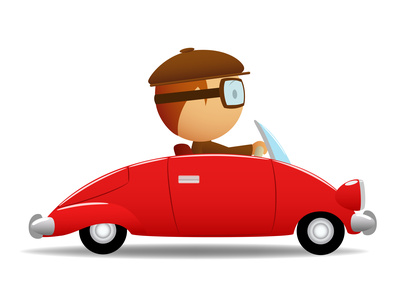Behind-the-wheel driving test: Stay calm and focused

February 13, 2014
(Note: This is the second part of a two-part article about passing the DMV’s behind-the-wheel exam.)
In the previous issue of the Wildcat Tribune, I gave an overview of the DMV’s behind-the-wheel exam, and focused on the first part of the test: the Pre-Drive Checklist. This article will let you know what to expect for the actual driving portion of the test, and examine the dreaded “critical driving errors” and “maneuver errors” you will want to avoid. To get your license, you must have zero critical errors and less than sixteen maneuver errors.
During the behind the wheel test, the examiner will direct you to drive on both business and residential streets around the DMV. In general, the examiner will look to see how well you maneuver the car. He will determine your score on how well you maintain proper speed, check for traffic, obey traffic signals and signs, brake, yield, and use your turn signals. In addition, at intersections, the examiner will determine how well you decelerate and if you come to a complete stop when required. He will also look to see if you avoid unnecessary stopping. Driving instructors say one of the most common maneuver errors is failing to check for traffic — which is required throughout the test — including when entering all the intersections, making lane changes, making turns, and leaving and returning to the DMV lot. It is actually an error that many drivers get marked down on more than once in the “Maneuvers” section of the score sheet. While you may believe that your great peripheral vision allows you to check for traffic without moving your head left or right, the examiner might not agree. Remember, you have to convince the examiner that you are checking for traffic throughout the test, so make sure the examiner can see some head movement.
As for the turns, you want to make sure your turns are not too wide, too short, too fast or too slow, and that you turn into the correct lane. (I was surprised to hear that one of my neighbor’s relatives failed the test when she made a left turn onto Hopyard near the DMV too slowly.) Finally, you will be tested on the backing up maneuver (my least favorite part of the test), where you will have to back the car up several car lengths while keeping the car parallel to the curb. This test is typically performed along a quiet residential street. You cannot hit the curb or veer into the street.
Speaking about hitting things, there are 8 critical errors you must avoid to pass this behind the wheel test:
- Intervention by the examiner
- Strike an object/curb
- Disobey traffic sign or signal
- Disobey safety personnel or safety vehicles
- Dangerous maneuver
- Speed (too fast or too slow)
- Auxiliary equipment use
- Lane violation
The Wildcat Tribune talked to several licensed DVHS students about their behind-the-wheel test experience. Specifically, we asked the following three questions: 1) What part of the behind the wheel test did you fear the most? 2) What was your biggest mistake on the behind the wheel test? and 3) What advice would you give someone who is about to take this test?
Junior Syed Razzaque replied: “I feared the right turn you have to make after exiting the DMV at the start of your test. My biggest mistake was going 40 in a residential zone. My advice is to compliment your examiner.”
Junior Scott Olvera answered, “I feared the driving test with all the little laws and regulations you had to follow in order to pass. But as long as you practice and get in the habit of obeying them, you should be fine. The worst mistake I made was stopping a little bit in the cross walk because I came upon a yellow light and couldn’t run it, or else I would’ve run over some pedestrians. (Don’t think the instructor would have liked that.) So I had no choice but to stop on the line and get marked down for it. No matter how much you are ready for the test, you will be nervous. It will happen and the only thing you can do to overcome the nervousness is practice everything, from lane changes to checking over your shoulder. If you practice everything you learned, you will do fine. And to answer any question on whether the test is hard or not, all you do during the test is drive around the streets and that’s it. Simple as that.”
Finally, junior Connor Riano revealed, “My biggest fear was that I would hit the curb on the way out of the DMV and automatically fail my test. I don’t remember making any big mistakes. I only committed a few minor errors. I think the most important thing you can do is to stay calm. Being nervous causes you to make mistakes. Be sure to practice, get familiar with the area around the DMV, and be confident. Good luck!”

minecraft games • Sep 9, 2015 at 12:19 pm
Hello friends, its fantastic post about teachingand completely defined, keep it up
all the time.